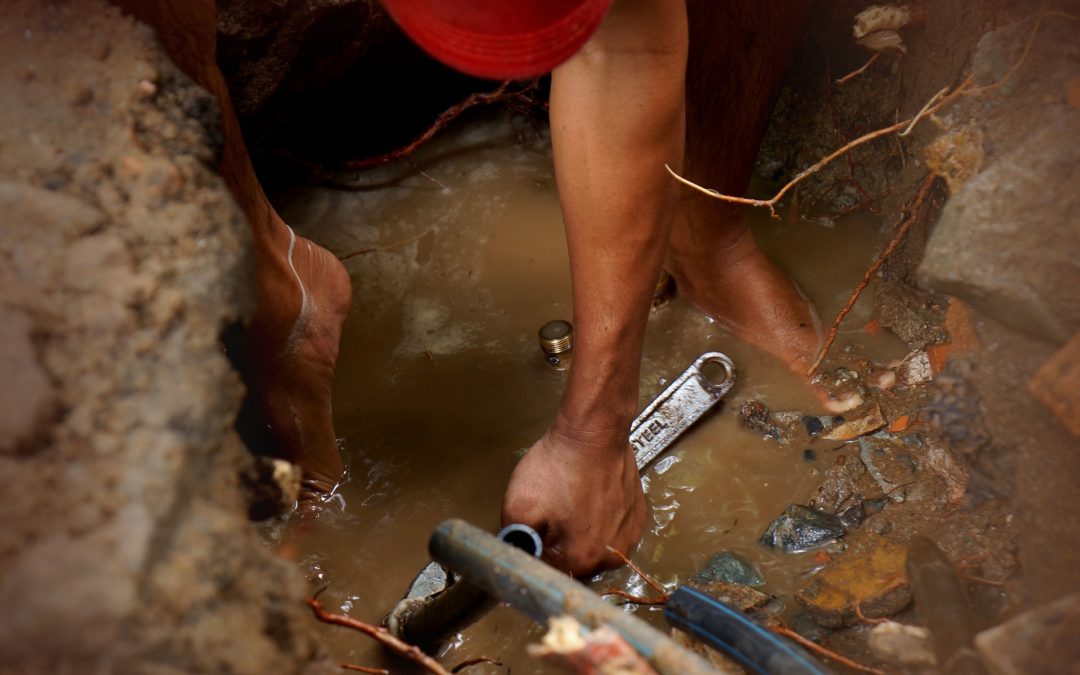There is a serious underground threat in the backyards of more than 21 million American households – or about 60 million Americans, who depend on an underground tank to dispose of waste. Few people think about their septic tank on a day to day basis. It’s truly a case of “out of sight, out of mind” until (usually on a holiday, family event, or special occasion), the septic system quits. Suddenly, the world is a different place and your reliance on wastewater disposal for drinking and cooking, laundry and dishes, bathing and toilets – becomes crystal clear.
A little bit of knowledge can help you understand how your septic system works and how to prevent a disaster. There are two parts to a septic system – the tank and the drain field. Wastewater flows from your house, an average of 80 to 100 gallons per person per day. It flows directly into the septic tank. The average septic tank can hold between 750 and 1250 gallons, so it needs additional space, and that is where the drain field comes into use. Gravity pulls the heavy solids to the bottom, while bacteria break down the sludge and grease that form at the top. The separated wastewater is pushed into the drain field. The drain field is spread through underground pipes across a broad area to seep into the ground and disperse through the earth, which acts as a natural filter.
This bit of knowledge about an important part of your home’s systems can help you understand how to prevent disaster. If too much water is pushed into the system too quickly, the bacteria don’t have enough time to break down sludge and grease. As a result, denser materials are distributed to the drain field which clog the small holes that allow the water to disperse. This closes the outlet for water, and eventually the system is unable to absorb more wastewater and “back ups” leading to expensive repairs. The solids which accumulate at the bottom of the tank build up and consume more and more of the tank’s space. Ultimately, there is not enough space and the system stops functioning.
Beyond the immediate crisis, there are serious consequences. First, there is the issue of cost. Replacing a failing septic system can cost anywhere from $3,000 to $10,000. Secondly, a malfunctioning system can spew contaminated wastewater where it can come into contact with people and pets and cause serious illness. Third, septic systems which fail can contaminate groundwater and pollute local streams and lakes.
The good news is that a few simple steps can ensure the long term functioning of both your septic tank and drain field. A well-maintained system should last between 20 and 40 years. Follow these simple steps for a disaster-free future:
- Use water wisely – If the average person uses 80 to 100 gallons per day, it’s easy to see that a 750 gallon tank can have a problem with a day of washing the family’s clothes, visitor showers, unrestrained lawn watering, and other “over the top” uses of water.
- Know when to pump – The number of people in the home and the size of the tank determine how often the septic tank needs to be pumped out. Find your schedule and mark your calendar.
- Protect your drain field – Know where your drain field is and be sure to avoid planting trees which can put roots into the pipes. Also, keep heavy machinery which could damage pipes from driving over these areas
- Avoid solid disposal – Minimize solids such as foods, grease, paper products, and other items which cannot dissolve.
- Avoid using drain cleaners – Your septic tank works by the process in which bacteria break down grease and sludge. Drain cleaners interfere with this and should be used sparingly.
- Monitor water discharge of large devices such as whirlpools and hot tubs – The sudden discharge of high volumes of water into your system can push solids into the drain field.
- Consider the impact of garbage disposals – They function by grinding food and sending it into the septic system. This can vastly increase the amount of solids and shorten the life of your system
- Use washing machines to conserve water – Consider energy and water conserving models and use the appropriate setting for the amount of laundry being done. Spread washings over several days.
- Divert outside water away from your drain field – Rain gutters, sump pumps, and other drains add to the burden of the drain field.
- Call a plumber at the first sign of trouble – Early intervention at the first sign of slow drain, gurgling noise, a bad smell outdoors may help catch a problem before it becomes a disaster.
Knowledge is the key to preventing many of the disasters that can happen. A bit of knowledge of how your septic system operates can save money, help the environment and add to your peace of mind.


